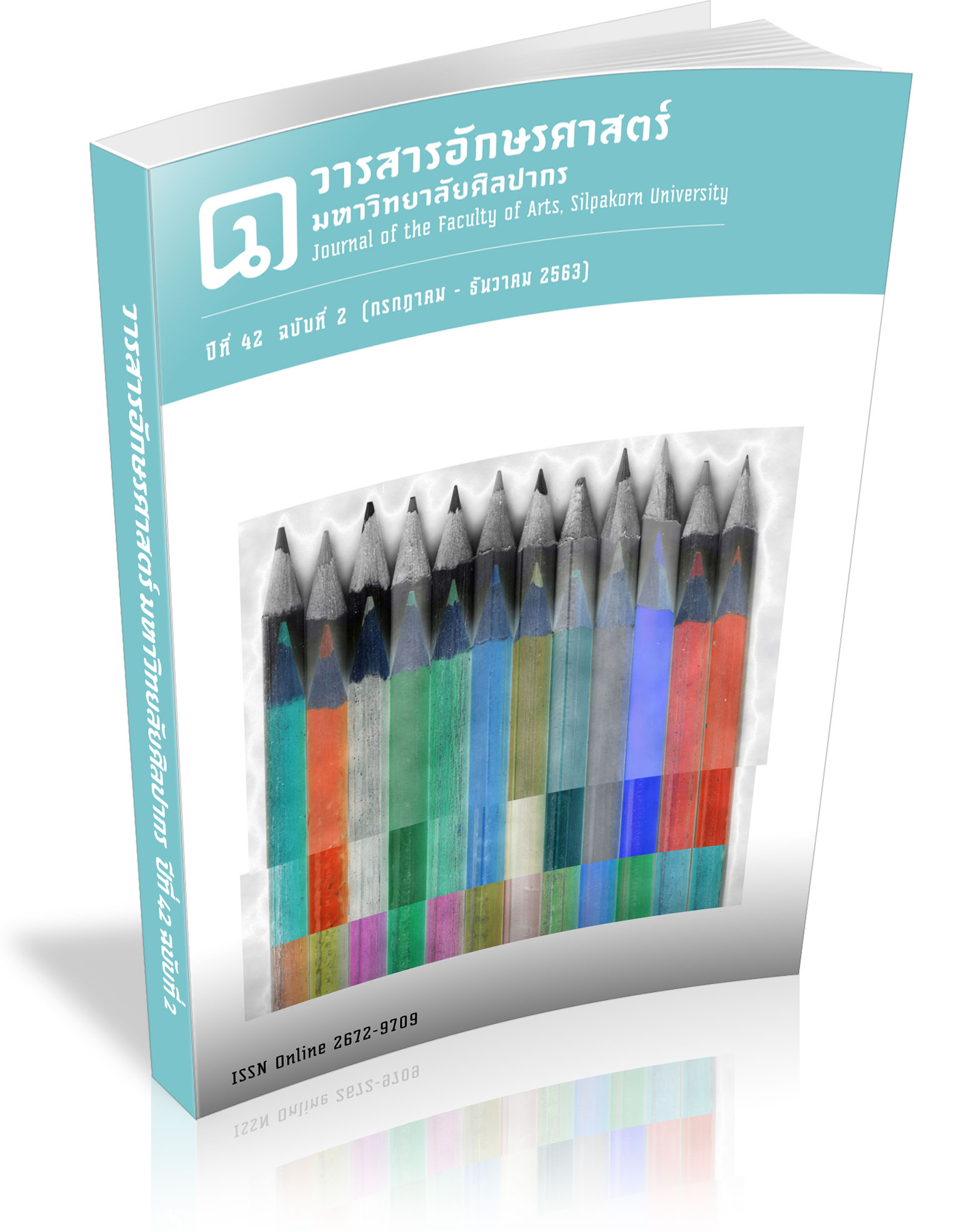The Use of Background Knowledge in Reading Comprehension: the Case Study of Thai Learners of Japanese at Different Proficiency Levels
Keywords:
background knowledge, schema theory, Thai learners of Japanese, textual structure knowledge, content knowledgeAbstract
This study aims to investigate whether Thai learners of Japanese at different proficiency levels draw on their background knowledge in similar or diverging ways through the lens of schema theory. Forty six learners were divided into four groups. They were asked to read a Japanese narration text (1,210 characters) and answer questions about its text structure and contents. Upon competing their reading, they were interviewed individually. The results show that advanced learners and upper-intermediate learners used background knowledge on textual structure to greater degree than intermediate learners and pre-intermediate learners. Advanced learners also applied top-down and bottom-up strategies together with background knowledge to help them answer questions regarding the textual structure. Moreover, advanced learners used top-down strategies to answer questions regarding the reading content more than learners in other proficiency levels.
Downloads
References
Adams, M.S., & Collins, A. (1979). A Schema-Theoretic View of Reading. In Roy Freedle. (Ed.), New Directions in Discourse Processing Volume 2, 1-21, Norwood, New Jersey: Ablex Publishing.
Baker, L., & Brown, A. L. (1980). Metacognitive skills and reading. Retrieved 24 January 2020, from https://files.eric.ed.gov/fulltext/ED195932.pdf
Carrell, P.L. (1983). Schema theory and ESL reading: Classroom implications and applications. The Modern Language Journal, 68, 332-342.
Carrell, P.L., & Eisterhold, J.C. (1983). Schema Theory and ESL Reading Pedagogy. TESOL Quarterly, 17(4), 553-573.
Cecilia Yuet & Hung Chan. (2003). Cultural content and reading proficiency: A comparison of Mainland Chinese and Hong Kong learners of English. Language, Culture and Curriculum, 16(1), 60-69.
Hoshi, S. (1991). Nazo no robotto. In Ikeda, S. (Ed.), Chuukyuu karano nihongo – dokkai chuushin, 13-15, Shintensha. (In Japanese)
Hudson, T. (1982). The effects of induced schemata on the “short circuit” in L2 reading: Non-decoding factors in L2 reading performance. In P.L. Carrell, J. Devine, & D. E. Eskey, (Eds.), Interactive approaches to second language reading. Cambridge: Cambridge University Press.
Levine, M., & Haus, J. (1985). The effect of background knowledge on the reading comprehension of second language learners. Foreign Language Annals, 18, 391 - 397.
Minaminosono, M. (1997). Dokkai sutoratejii no shiyou to dokkairyoku to no kankei nikansuru chousa kenkyuu -gaikokugo toshiteno nihongo tekisuto dokkai no ba'ai-. Sekai no nihongo kyouiku, 7, 31-44. (In Japanese)
Noda, H. (2014). Joukyuu nihongo gakushuusha ga gakujutsuronbun wo yomu toki no houhou to kadai. Senmon nihongo kyouiku kenkyuu, 16, 9-14. (In Japanese)
Olga, P. (2006). Dokkai sutoratejii no shiyou kara mita monogataribun no dokkai katei – Kiev kokuritsu gengo daigaku niokeru dokkai shidou no kaizen ni mukete. Nihon gengo bunka kenkyuukai ronshuu, 2, 193-220. (In Japanese)
Osumi, A. (2005). Dai ni gengo gakushuusha wa tekisuto wo dou yondeiru ka – kiyuuchisiki no kasseika to ikkansei no keisei. Kokusai kouryuu kikin nihongo kyouiku kiyou, 1, 37-51. (In Japanese)
Rahman, T., & Bisanz, G.L. (1986). Reading ability and use of a story schema in recalling and reconstructing information. Journal of Educational Psychology, 78(5), 323-333.
Rumelhart, D.E. (1980). Schemata: The building blocks of cognition. In R. Spiro, B. Bruce, & W. Brewer (Eds.), Theoretical Issues in Reading Comprehension, 33-58, Lawrence Erlbaum.
Takamatsu, M. (2004). Brief Thoughts on ki-shoo-ten-ketsu. Takazaki keizai daigaku ronshuu, 46, 115-122. (In Japanese)
Tateoka, Y. (2000). Daini gengo no dokkai ni okeru kiyu chishiki no hataraki to hen' yo : sozoteki yomite no ikusei e. nisen'nendo hakushi gakui seikyu ronbun. (In Japanese)
Downloads
Published
How to Cite
Issue
Section
License
ผู้เขียนบทความต้องยินยอมในข้อกำหนดต่าง ๆ ของวารสารก่อนส่งบทความตีพิมพ์




